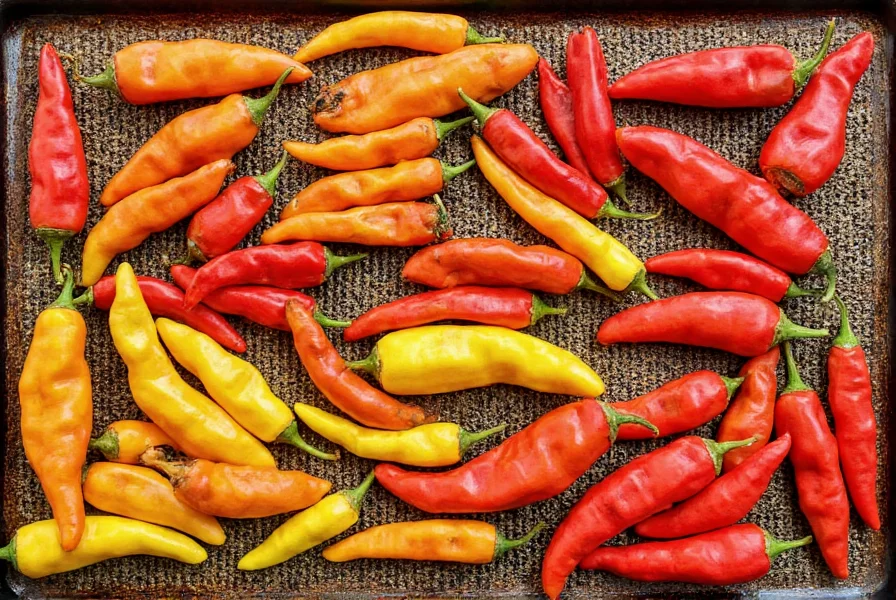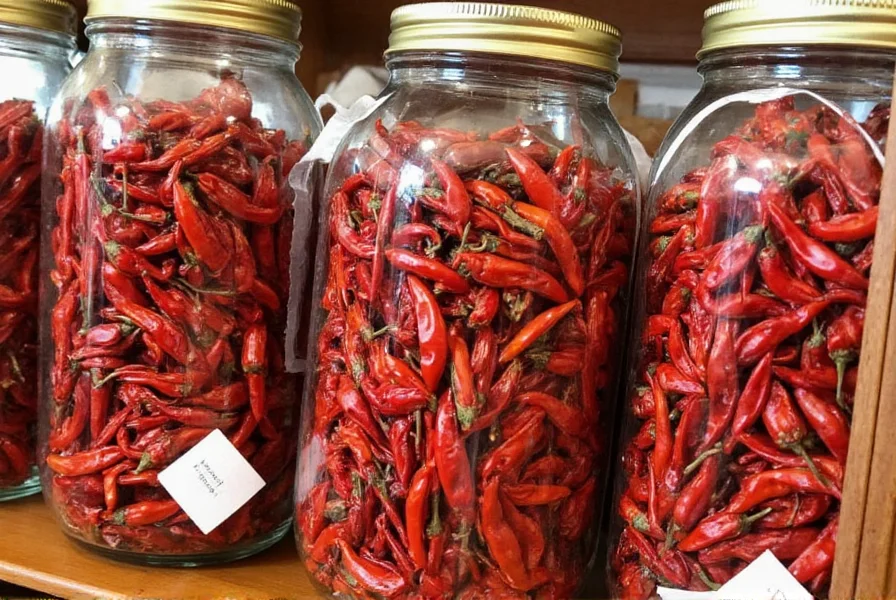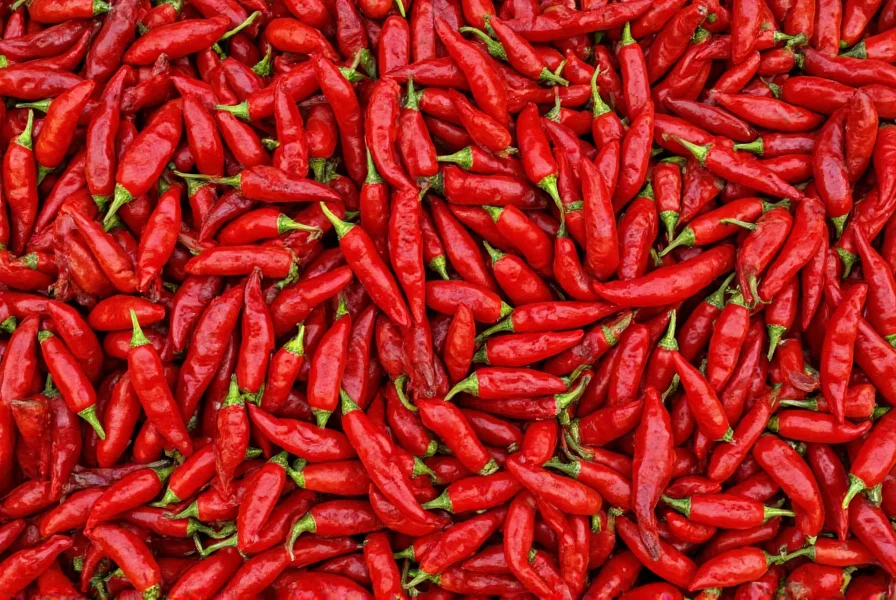Drying chili peppers preserves their intense flavor and heat for year-round culinary use. This traditional preservation technique transforms fresh peppers into versatile ingredients that can be crushed, powdered, or rehydrated for sauces, stews, and spice blends. Whether you've harvested your own garden peppers or bought a surplus at the market, proper drying techniques ensure you maintain maximum flavor, color, and capsaicin content.
Why Dry Chili Peppers?
Drying concentrates the natural flavors and capsaicin in chili peppers while removing moisture that causes spoilage. Properly dried chilies can maintain their quality for 1-2 years when stored correctly. Unlike freezing, drying doesn't require freezer space and creates a more concentrated flavor profile. Dried chilies develop complex, smoky notes that fresh peppers lack, making them essential for authentic Mexican, Asian, and Indian cuisines.
Comparing Drying Methods for Chili Peppers
Each drying technique offers different advantages depending on your climate, equipment, and time constraints. Understanding these differences helps you select the best approach for your specific situation.
| Drying Method | Time Required | Temperature | Best For | Flavor Preservation |
|---|---|---|---|---|
| Food Dehydrator | 12-24 hours | 125°F (52°C) | All chili varieties | Excellent |
| Oven Drying | 6-12 hours | 140-170°F (60-77°C) | Thicker peppers | Good |
| Air/Sun Drying | 1-3 weeks | Ambient | Dry climates | Variable |
| Stringing (Ristra) | 2-4 weeks | Ambient | Long, thin varieties | Excellent |
Step-by-Step Guide to Drying Chili Peppers
Preparing Chilies for Drying
Start with fully ripe, blemish-free chilies. Wash and thoroughly dry them with a clean towel. For thicker peppers like habaneros or bell peppers, slice them lengthwise to expose the inner flesh and seeds. Thin-skinned varieties like cayenne or Thai chilies can be dried whole. Never remove seeds before drying, as they contain valuable flavor compounds and help maintain structure during the drying process.
Food Dehydrator Method (Most Consistent Results)
Arrange prepared chilies in a single layer on dehydrator trays without overlapping. Set the temperature to 125°F (52°C) and dry for 12-24 hours. Check periodically after 12 hours—properly dried chilies should be brittle and snap easily. Rotate trays occasionally for even drying. This method preserves the most volatile flavor compounds while preventing mold growth.
Oven Drying Technique
Place chilies on a wire rack over a baking sheet to allow air circulation. Set your oven to the lowest possible temperature (ideally 140-170°F or 60-77°C). Prop the oven door open 2-3 inches using a wooden spoon to maintain airflow and prevent moisture buildup. Check every 2 hours and rotate the tray. Total drying time ranges from 6-12 hours depending on pepper thickness. This approach works well when a dehydrator isn't available but requires careful monitoring to prevent scorching.
Traditional Air Drying Methods
In dry climates with low humidity (below 60%), air drying produces excellent results. For stringing (ristra method), thread a needle with cotton string and pierce through the stems, leaving space between peppers. Hang in a warm, dark, well-ventilated area away from direct sunlight. Alternatively, spread peppers on mesh screens in a single layer, covering with cheesecloth to protect from insects. Turn daily and expect 1-3 weeks for complete drying depending on conditions.

Determining When Chilies Are Properly Dried
Properly dried chilies should be brittle enough to snap cleanly when bent. They'll feel lightweight with no moisture when squeezed. The interior flesh should be completely dry with no soft spots. For whole peppers, the skin should separate easily from the flesh. Under-dried chilies risk mold development during storage, while over-dried peppers become excessively brittle and lose flavor complexity.
Storing Dried Chili Peppers for Maximum Shelf Life
Before storage, ensure chilies have cooled completely to room temperature. Store in airtight glass jars or vacuum-sealed bags in a cool, dark place. Adding a food-safe desiccant packet helps absorb any residual moisture. Properly stored dried chilies maintain peak quality for 1-2 years. Check periodically for any signs of moisture or mold. For extended storage beyond two years, keep in the freezer where they'll remain usable for 3-5 years with minimal flavor degradation.
Troubleshooting Common Drying Issues
Mold development: Usually indicates insufficient airflow or high humidity. Increase ventilation or switch to a dehydrator/oven method. Discard any moldy peppers immediately as mold spores can spread.
Peppers turning black: Typically caused by temperatures that are too high. Reduce heat and increase airflow for subsequent batches.
Inconsistent drying: Rotate trays regularly and ensure uniform spacing. Slice thicker peppers to promote even moisture removal.

Culinary Uses for Dried Chili Peppers
Dried chilies offer unique flavor profiles compared to fresh. Rehydrate by soaking in hot water for 15-20 minutes before using in sauces or stews. For powders, toast dried chilies briefly in a dry skillet before grinding to enhance flavor. Crush whole dried chilies for chili flakes or infuse them in oil for spicy cooking oil. Different drying methods affect heat levels—sun-dried chilies often develop smokier notes while dehydrated peppers maintain brighter fruit flavors.
FAQ
Can I dry chili peppers in the microwave?
While possible, microwave drying isn't recommended for chili peppers. The uneven heating often causes some areas to burn while others remain moist, creating fire hazards and inconsistent results. Food dehydrators or oven methods provide much better control for preserving flavor and preventing scorching.
Do dried chili peppers get hotter than fresh ones?
Dried chili peppers often seem hotter because the water content has been removed, concentrating the capsaicin. However, the actual capsaicin levels remain the same. The perception of increased heat comes from the concentrated form. Some drying methods can slightly degrade capsaicin over extended periods, potentially reducing heat slightly in very old dried chilies.
How do I rehydrate dried chili peppers properly?
Place dried chilies in a heatproof bowl and cover with boiling water. Let soak for 15-20 minutes until softened but still holding their shape. For deeper flavor extraction, add a pinch of salt or splash of vinegar to the water. Drain and remove stems and seeds before using in recipes. The soaking liquid contains valuable flavor compounds—strain and use it in your dish for extra depth.
Why do my dried chili peppers develop mold during storage?
Mold develops when chilies weren't completely dry before storage or when moisture entered the container. Ensure peppers are brittle and snap cleanly before storing. Use airtight containers with desiccant packets, and store in a cool, dark place. In humid environments, consider freezing dried chilies for long-term storage. Always inspect before use and discard any showing mold signs, as toxins can spread beyond visible areas.











 浙公网安备
33010002000092号
浙公网安备
33010002000092号 浙B2-20120091-4
浙B2-20120091-4